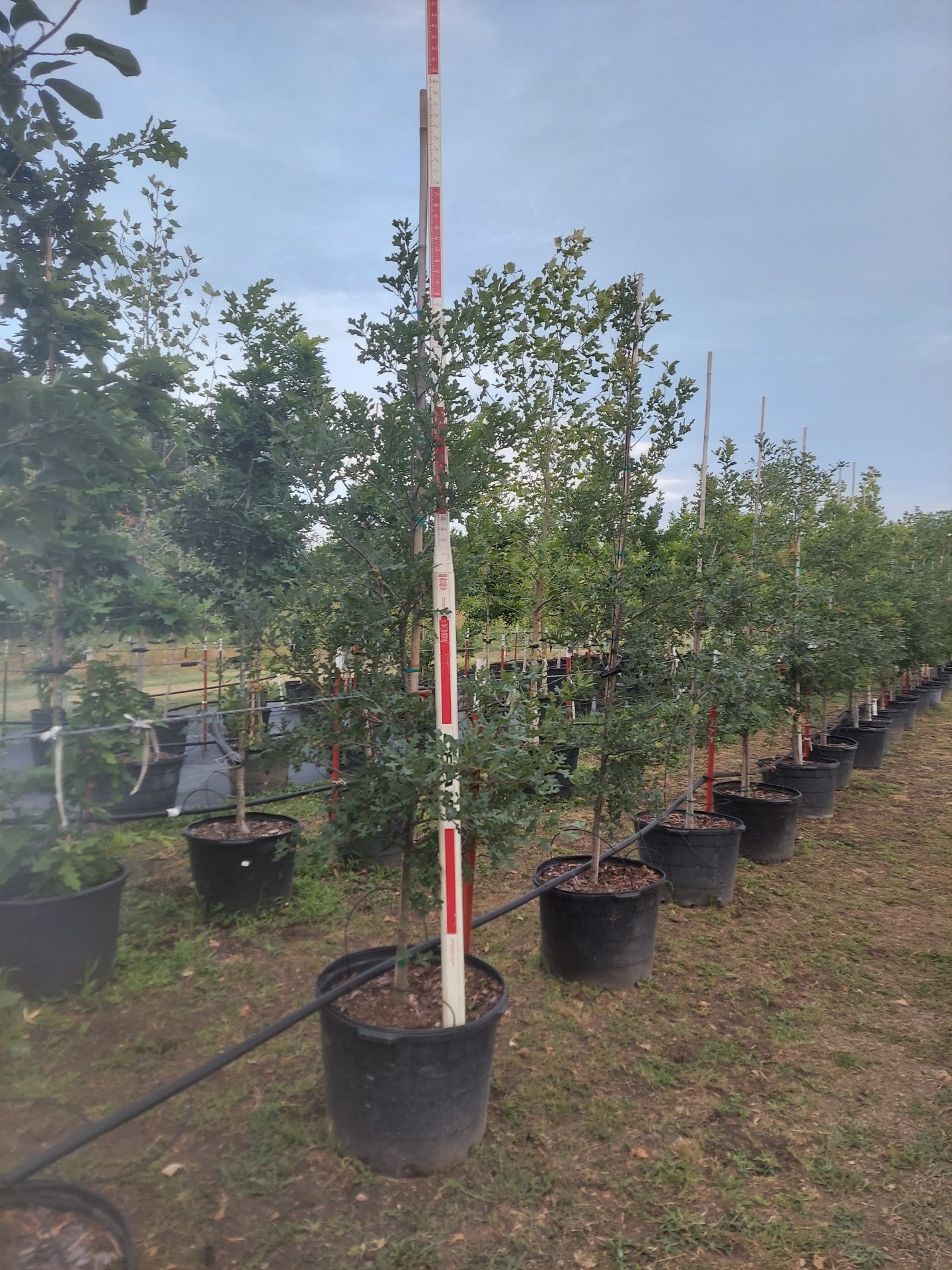Lacey Oak
Lacey Oak
Description: The Lacey Oak is a small to medium-sized tree with a rounded or irregular crown and a relatively short trunk. It typically grows to heights of 20 to 30 feet (6 to 9 meters) with a spread of 15 to 25 feet (4.5 to 7.5 meters) at maturity. The tree has distinctive blue-green to grayish-green foliage that is deeply lobed with rounded tips. The leaves are often reminiscent of lace, which is where the tree gets its common name. In the fall, the foliage may turn shades of yellow, orange, or red before dropping, adding seasonal interest to the landscape.
Best Growing Zones: The Lacey Oak is well-suited to USDA hardiness zones 7 through 9. It thrives in warm, temperate climates with mild winters and is relatively drought-tolerant once established. This tree is specifically adapted to the hot and dry conditions of central Texas but can also be grown in other regions with similar climates and soil types.
Soil Requirements: Lacey Oaks prefer well-drained soil and are tolerant of a variety of soil types, including sandy, loamy, or rocky soil. They can tolerate occasional drought but benefit from regular watering, especially during periods of extended dryness. Adding organic matter to the soil can help improve its texture and fertility.
Maintenance: Lacey Oaks are relatively low-maintenance trees. They require minimal pruning but can be shaped or thinned as needed to maintain a strong and attractive form. Pruning is best done in late winter or early spring before new growth begins. The tree is relatively pest and disease resistant but may occasionally be affected by issues such as oak wilt, powdery mildew, or scale insects. These problems can usually be managed with proper cultural practices.
Landscape Use: Lacey Oaks are valued for their attractive foliage, unique growth habit, and adaptability to a variety of growing conditions. They can be used as specimen trees, shade trees, or street trees in gardens, parks, and landscapes. They are also suitable for planting along streets, driveways, or property boundaries, where their rounded crown provides shade and visual interest. Additionally, they provide habitat and food for wildlife, making them valuable components of wildlife gardens and naturalized areas.


